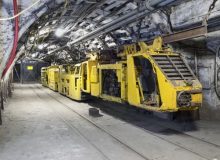Non-Electric Engine Starting Systems – Top 5 Advantages
You want one thing from your engine, for it to start every time you push the button. That normally requires an electric start motor. But what happens if the power is down and the starter battery has lost its charge? If the engine is critical (i.e a generator at a data centre or hospital) the results could be catastrophic. A non-electric engine starting system mitigates this risk by not suffering from the same problems.
- Few oil platforms have an abundance of space. IPU’s hydraulic and air starter motors can connect to existing utilities.
- IPU’s non-electric starting systems are not as impacted by temperature like battery starting systems.
- IPU’s non-electric engine starting systems comply with ATEX as they do not produce a spark.
Electric batteries are one of the most common power sources for engine starting systems. They are simple, easy-to-use and are often the default starter provided by engine manufacturers. However, batteries have their drawbacks. There are also working environments that require ATEX certification (such as an underground mine or offshore gas platform) where even a small spark is considered dangerous. This is why many marine, oil & gas and mining organisations choose non-electric engine starting systems.
1. ATEX approved – Zero sparks
ATEX regulations protect those working in hazardous environments. They’re areas that contain highly flammable gasses and materials as part of the day to day activities. Electric starter motors could pose a risk as they produce a spark to start an engine.
IPU’s ATEX approved starter motors do not produce a spark as they do not use electricity. They use either air or hydraulic pressure depending on the requirements of the project and the facilities available.
2. Not impacted by temperature
Cranking an engine is hard work and takes a significant amount of energy. During cold weather the task is made even more difficult by the thickened viscosity of the oil in the crankcase which increases the drag. At the same time a battery has less amps available because cold temperatures slow down its chemical processes.
If the starter has worn internal components, a poor ground or positive cable connection, or the battery’s level of charge is low, the engine may not crank fast enough to start or it may not crank at all. This affects the reliability of critical systems.
IPU’s starting systems do not require a battery so are more reliable in temperature extremes. We have successfully tested them in some of the world’s most extreme conditions. Including the sub-zero temperatures off the Russian coast to the baking heat of the Arabian deserts.
3. Non-electric engine starting systems never loses charge
As batteries get older they eventually struggle to hold a charge. Hydraulic and air starting systems from IPU do not to suffer the same fate. IPU’s engine start systems can maintain enough energy to crank the engine even after long shut down periods. Alternatively, our starter motors can be connected to existing air or hydraulic supply ports for even greater reliability.
4. Manual Charging
Non-electric starters have a key back up solution should everything else fail, an option for manual charging. IPU’s hydraulic and air starting systems come with either a hand pump or foot pump depending on the application. This means, even if the charge is lost a little elbow grease can get the engine going again.
5. Minimal space and equipment requirements
Very few oil platforms, drilling rigs or mining vehicles have an abundance of space to house a starting system. That’s why IPU offers hydraulic and air starter motors that can connect to existing facilities. Alternatively, our engineering team can design a custom start package to fit almost any space.
Free Handbook
Our free ATEX Handbook de-mystifies the complex world and ATEX safety approvals. Get your free copy here.



